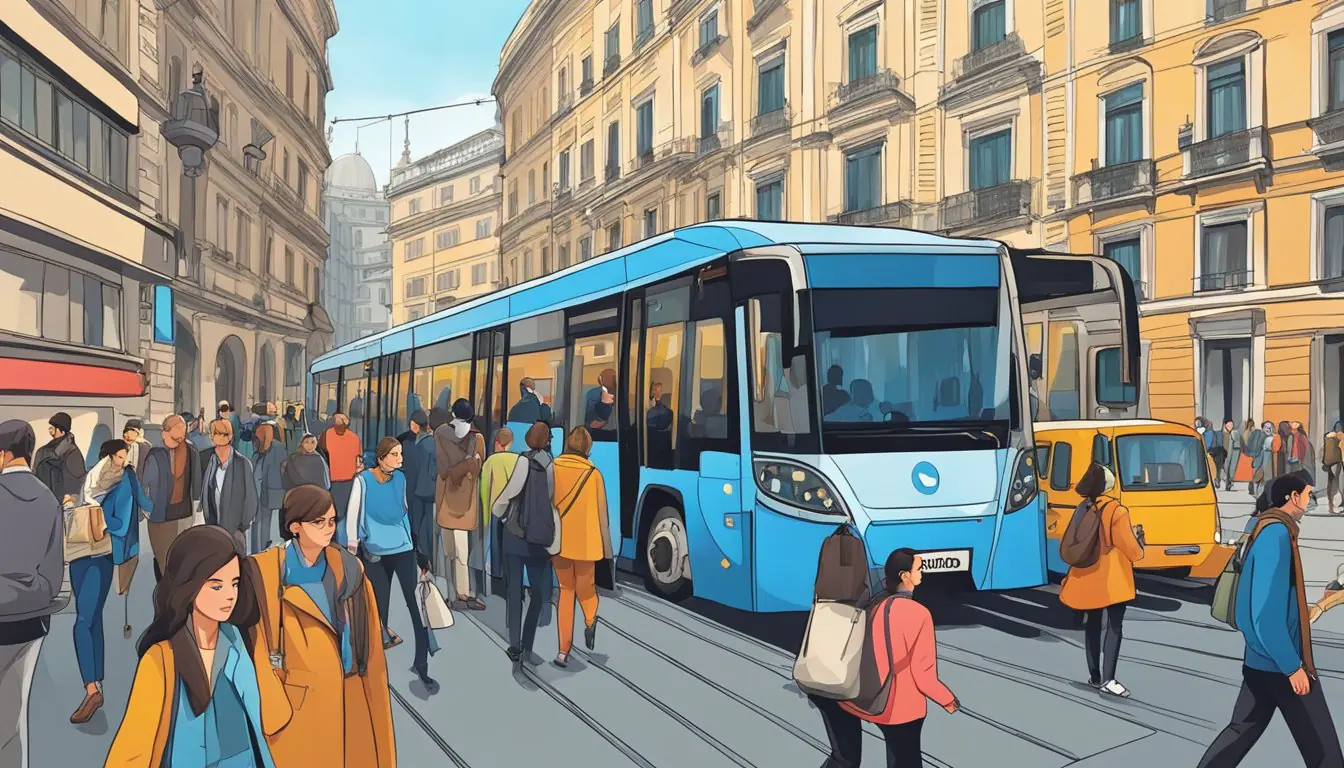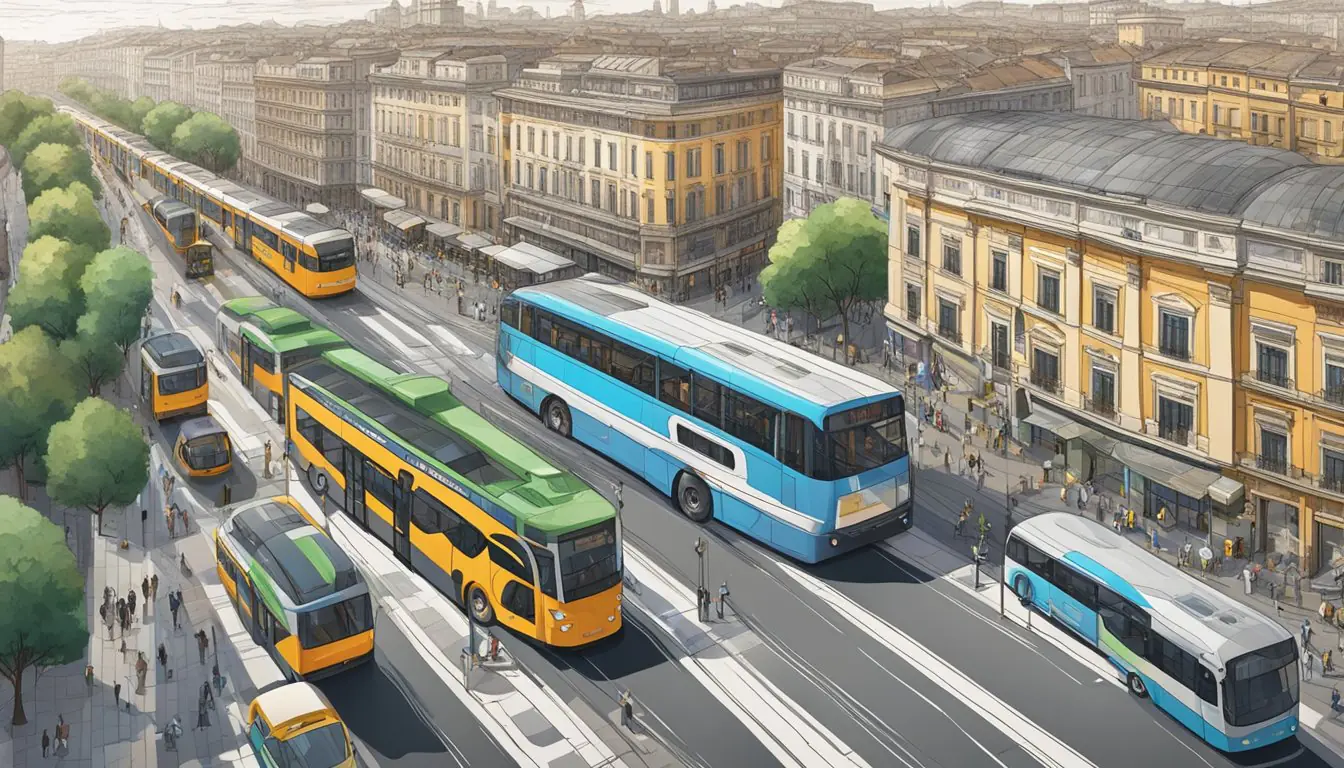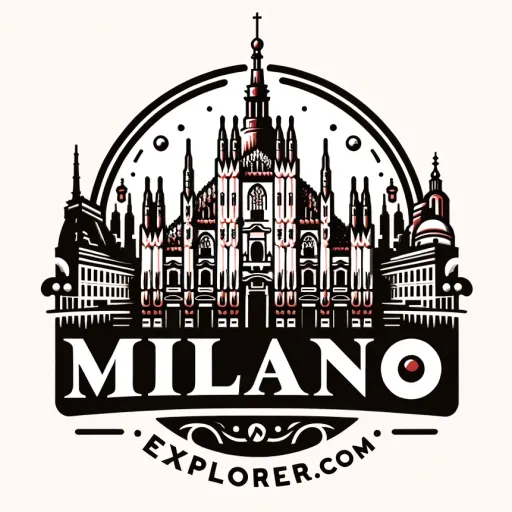Navigating Milan’s public transport system is key to experiencing the cultural and historical riches this Italian city has to offer.
Whether you’re a tourist aiming to visit iconic landmarks or a local commuting to work, understanding the extensive network of buses, trams, and the metro is essential.
The Azienda Trasporti Milanese, or ATM, operates Milan’s public transit services, offering convenient and affordable options to move around the city.
They provide an official app, ATM Milano Official App, enhancing travel experience by allowing ticket purchases and journey planning right at your fingertips.

Public transportation in Milan is not only efficient but also environmentally conscious, with a fleet of eco-friendly buses complementing the traditional means of transit.
For short-term visitors, various ticket options are available such as a 90-minute ticket for a quick trip or day passes for unlimited travel, which makes exploring the city straightforward and cost-effective.
Moreover, for destinations that are not easily reached by metro or bus, taxis offer a reliable alternative with the convenience of designated pickup areas and the ability to book via call or app.
How to Navigate Milan’s Public Transport
Key Takeaways
- Milan’s public transport network is operated by ATM and includes buses, trams, and a metro system.
- Ticket options cater to both short-term and long-term travelers, offering flexibility in travel planning.
- Environmentally friendly options and convenient taxi services complement the public transit system.
Getting Around Milan
Milan offers an efficient and extensive public transport network managed by ATM (Azienda Trasporti Milanesi), simplifying navigation through Italy’s second-largest city.
The system includes a comprehensive metro, buses, trams, and suburban rail services that are interconnected to provide convenient transit options for both locals and visitors.
Understanding Milan’s Public Transport Network
Navigating Milan’s public transport system starts with understanding the layout of its metro map.
The city’s metro has several lines, each identified by a unique color: M1 (red), M2 (green), M3 (yellow), and M5 (purple), which efficiently connect to different districts and outskirts.
Buses and trams complement the metro services, with night buses covering after-midnight travel.
The integration between metro, buses, trams, and the suburban rail network, known as ‘Passante Ferroviario’, allows seamless transfers.
The transportation network is designed to facilitate movement across all key areas of Milano, making it convenient to visit any attraction, business district, or neighborhoods within the city.
Tickets and Fares
Tickets and fares in Milan are straightforward and affordable.
The single ticket allows 90 minutes of travel on all forms of public transport, starting from validation, and there are other affordable tickets available such as a day ticket or a 48-hour pass for those planning extensive travel over a couple of days.
- Single Ticket: Valid for 90 minutes, from the time of validation, across the network.
- Day Ticket: Provides unlimited rides for 24 hours following validation.
- 48-hour pass: Offers unlimited travel for 48 hours.
Special fares like the luggage ticket and various subscription options cater to specific travel needs.
For detailed information about ticket prices and purchasing options, visit the official ATM website.
Purchasing tickets can be done through vending machines, ATM Points, and authorized retailers.
Visitors should always validate their tickets before starting their journey to avoid fines.
With economical travel solutions, Milan’s public transport system is not only efficient but also cost-effective for all types of travellers.
Key Transportation Hubs
Milan’s public transportation network is extensive and efficient, with several key hubs that support travel both within the city and beyond it.
Understanding the major train stations, airports, and central nodes can greatly simplify navigation for visitors and residents alike.
Major Train Stations and Airports
Milan is served by three main airports: Linate, Malpensa, and Bergamo.
Linate Airport is the closest to the city center, offering mainly domestic and short-haul European flights.
Milan Malpensa Airport is the largest international airport in Milan and is divided into two terminals, connected by a shuttle service.
Bergamo Airport, officially named Orio al Serio International Airport, is located further away but is often used by low-cost airlines.
The city’s primary train stations, such as Milano Centrale, Milano Porta Garibaldi, and Milano Rogoredo, facilitate travel from Milan to domestic and international destinations.
Milano Centrale is one of Italy’s major railway hubs, with high-speed links and regional services that are essential for both daily commuters and tourists engaging in sightseeing.
Navigating the City Center
At the heart of Milan’s public transport system lies the city center, where the Duomo is a central point of orientation.
From here, one can easily reach other iconic sights such as the Galleria Vittorio Emanuele II, La Scala, and the Brera district, not to mention the trendy Navigli area, known for its canals and nightlife.
Due to construction and typical city traffic, the zones around these landmarks can be busy, but are well-serviced by trams and buses that complement the metro lines.
Visitors should be aware of traffic restrictions in these areas, designed to prioritize pedestrian zones and reduce congestion.
Additional Modes of Transportation

In addition to Milan’s extensive public transit system, visitors can utilize a variety of other transport modes for flexibility and convenience within the city.
Understanding Taxi and Car Services
Taxis in Milan offer a reliable form of transportation, particularly for those who require direct travel to a specific destination without the stops associated with public transit.
Taxi stands are conveniently located throughout the city, especially near major tourist attractions, hotels, and transport hubs.
The availability of a Milan taxi can be particularly beneficial during late-night hours or when carrying heavy luggage. For a more personalized experience, car services provide an option with the advantage of booking in advance.
Bicycle and Scooter Sharing Programs
With a focus on mobility and sustainability, Milan has embraced bike sharing and scooter sharing programs.
BikeMi, Milan’s bike sharing program, offers an eco-friendly way to navigate the city, allowing users to pick up and drop off bicycles at numerous stations.
This service promotes walking to and from bike stations as part of the journey, integrating exercise into daily travel.
For quicker trips or more thrill, scooter sharing programs are available, offering a fun alternative to the traditional streetcar or streetcars.
These options also alleviate the concern for parking, especially in crowded city areas.
Practical Information for Travelers
Milan’s public transportation is both efficient and cost-effective, offering travelers a variety of options for getting around the city.
With a comprehensive network that includes the metro, trams, and buses, one can explore Milan with ease.
The system is praised for its speed and convenience, ensuring that whether they’re shopping, dining, or checking into their accommodations, visitors are well-connected.
Shopping and Accommodations
When it comes to shopping in Milan, the public transport system ensures that the best boutiques and stores are readily accessible.
Many accommodations are strategically located near metro stations, such as the central Duomo and Montenapoleone areas, making it easy for travelers to navigate between their hotels and prime shopping destinations.
The Milan metro is particularly useful for reaching different shopping districts swiftly.
For accommodations, visitors will find a range of options from luxury hotels to budget-friendly hostels, many of which are a stone’s throw away from local newsagents where travelers can purchase transport tickets.
Staying informed about ticket prices and travel cards can help tourists save money, especially if they’re planning multiple trips across the city.
Dining and Nightlife
Milan’s public transport system efficiently connects food enthusiasts and night owls to the city’s renowned restaurants and vibrant nightlife.
The historic Navigli district, famous for its canal-side dining and eclectic bars, is easily reachable by tram, making it a favorite among locals and tourists alike.
Visitors looking to indulge in Milan’s culinary scene will appreciate the extensive coverage of the city’s bus and tram lines, which operate until late, providing reliable transit even after a late night out.
Making use of the Milan tram system is a practical way to experience the authentic Milanese evening atmosphere.
Cultural Highlights

Navigating Milan’s public transport not only connects visitors to the city’s modern amenities but also provides access to a wealth of cultural treasures.
The seamless integration of historical and artistic venues along with transport routes make exploring these highlights convenient and enjoyable.
Historical Sites and Museums
Milan’s public transport system allows for effortless journeys to some of the most iconic historical sites in the world.
A prime destination is the Sforza Castle (Castello Sforzesco), accessible through the tram and bus lines, where visitors can delve into the city’s Renaissance past.
Equally compelling is the revered artwork, The Last Supper, Leonardo da Vinci’s masterpiece, which is displayed at the Convent of Santa Maria delle Grazie, just a short walk from the metro station.
For those who wish to explore a broader historical narrative, the Duomo di Milano stands as a breathtaking example of Gothic architecture, its spires visible from various points in the city, including the Duomo metro.
Tourists can also visit a wide array of museums that are easily reachable on public transport routes.
Arts and Entertainment
The arts scene in Milan is vibrant and readily accessible.
La Scala, one of the most prestigious opera houses in the world, offers visitors not only sublime performances but also tours of its museum, providing insight into Italy’s rich operatic tradition.
Conveniently located near a metro stop, La Scala remains at the forefront of Milan’s arts and entertainment offerings.
In the historic district of Brera, one finds a juxtaposition of Milan’s old-world charm and its contemporary artistic expression.
The Brera Art Gallery houses an impressive collection, including works by great Italian painters, with the Brera district itself easily walkable and served by public transport.
Visitors interested in the works of Leonardo da Vinci will find a trove of his engineering and scientific explorations at the National Museum of Science and Technology, reached by the city’s robust network of trams and buses.
Travel Tips and Resources
Mastering public transportation in Milan can make a visit not only smoother but also more enjoyable.
Knowing how to effectively utilize the Milan Metro and understanding the ticket options available are paramount for a stress-free experience.
Maximizing Your Visit
When exploring Milan, purchasing a day ticket or a 48-hour pass offers unlimited travel and is cost-effective for visitors planning to use public transportation frequently.
These passes are ideal for those who find buying single tickets for each trip overwhelming.
Travelers can easily visit various districts within Milan, ensuring that attractions like the Duomo and Sforza Castle are within reach.
These tickets are not only useful in Milan but can also serve as a more budget-friendly alternative when day-tripping to nearby cities such as Venice and Rome.
Staying Connected and Informed
To ensure timely and efficient navigation through Milan, travelers should stay updated with the latest information.
The ATM Milano Official App is an essential resource, providing real-time updates on the Milan Metro system, including maps and service changes.
It’s critical for visitors to have access to such digital tools, as they keep one informed and connected, especially useful when plans change unexpectedly or during busy holiday seasons.
Conclusion
Navigating Milan’s public transport system can be an efficient and cost-effective way to explore the city.
Travelers have access to a comprehensive network of subways, trams, and buses that connect virtually all areas, including the airports.
The Milan subway, with its multiple lines, is often the quickest mode of travel. However, trams provide the advantage of sightseeing and better orientation.
For those visiting Milan, understanding the ticket system is crucial.
One can purchase tickets that are valid across all urban transportation, allowing for seamless transitions between different modes of transport.
Additionally, the city’s transport operates from early morning until past midnight, making it convenient for both early risers and night owls.
When considering environmental impact, Milan’s public transportation is also a favorable choice.
It significantly reduces the carbon footprint compared to private vehicles. Milan’s commitment to an efficient public transport network demonstrates its role as a modern European city.
Lastly, visitors should remember that patience and a bit of planning go a long way.
With the right information and perhaps a navigation app, anyone can master the public transport system in Milan and
Frequently Asked Questions
When navigating the complex network of Milan’s public transportation, travelers often have common inquiries regarding ticket purchases, pass options, and system navigation.
This section aims to provide clear and concise answers to aid visitors in their journey around this vibrant city.
What options are available for purchasing public transport tickets in Milan?
Tickets for public transport in Milan can be purchased at ticket machines, kiosks, and some retail outlets, as well as online through the official ATM (Azienda Trasporti Milanesi) website.
Various types of tickets, including single rides and multi-ride passes, are available to suit different travel needs.
Can tourists buy a day pass for public transportation in Milan, and if so, how?
Tourists can purchase a day pass, known as the “giornaliero”, that allows unlimited travel on Milan’s public transportation network for 24 hours.
These passes can be bought at most ticket vending machines, ATM Points, and authorized retailers throughout the city.
What is the most efficient way to use the tram system in Milan?
Travelers find that the most efficient way to use the tram system is to familiarize themselves with the main tram lines that traverse key points of interest.
A useful guide to the tram system highlights the extensive network and service frequencies that connect the various parts of the city.
How can one obtain and use a Milan metro map to navigate the city?
Obtaining a Milan metro map is easy; they are available for free at metro stations and online.
Using this map, travelers can plan their route by locating the nearest metro station and identifying the correct line that will lead to their destination.
What are the benefits of using the Milan public transport app while traveling?
Utilizing the Milan public transport app provides benefits such as real-time updates on service changes, route planning tools, and digital ticket purchasing options, making it a valuable tool for efficient navigation.
Which type of public transport pass is best for an extended stay in Milan?
For an extended stay, visitors should consider the weekly, bi-weekly, or even monthly passes. These passes offer cost-effective and unlimited travel on Milan’s buses, trams, and metro. They can be purchased at any ATM Point or from authorized ticket agents.
